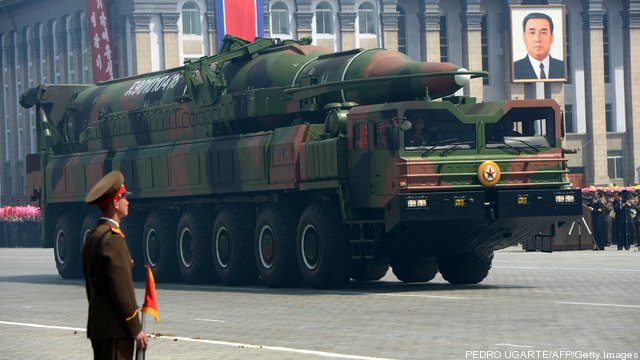Minefields At Sea: From The Tsars To Putin
Posted on
This is the first of three stories on the crucial but neglected question of sea mines and how well — or not — the United States manages this very real global threat. Since World War II, mines have sunk or crippled 15 US Navy ships, more than all other weapons put together. Like roadside bombs on land,… Keep reading →
What Navy’s New Maritime Strategy Should Say
Posted on
It’s fair to say that John Lehman is the most influential Navy Secretary of the last half century. Under President Ronald Reagan, Lehman “had an almost revolutionary impact on the Navy,” according to naval expert Norm Polmar. Lehman drove hard and pushed to build what has become known as the 600-ship Navy. Lehman knows how a… Keep reading →
6 Threats, 6 Changes, & A Brave New World: Intel Chief Vickers
Posted on
WASHINGTON: There’s no one thing that keeps the Pentagon’s chief of intelligence up at night. There’s half-a-dozen things — terrorism, cybersecurity, Iran, North Korea, Russia, and China — but Mike Vickers has a six-point plan to counter them. “The big challenge we face is really in the aggregation of challenges,” the under secretary for intelligence… Keep reading →
Star Wars At Sea: Navy’s Laser Gets Real
Posted on
PENTAGON: The age of laser weapons has officially begun. Since September, the Navy has had a $40 million, 30-kilowatt Laser Weapons System (LaWS) aboard the USS Ponce in the Persian Gulf. “They’re using it every single day,” said the Chief of Naval Research, Rear Adm. Matthew Klunder. Sailors — not contractors or engineers — perform basic… Keep reading →
Laser On A Truck: Army’s Role In Offset Strategy
Posted on
CAPITOL HILL: Where do ground forces fit in the Pentagon’s new offset strategy? The answer may be an intriguing mix of old-fashioned armored forces, mobile missile launchers, and lasers on trucks. While Defense Secretary Chuck Hagel’s remarks formally launching “offset” were frustratingly vague, we’ve heard plenty from other officials and outside thinkers about how the… Keep reading →
47 Seconds From Hell: A Challenge To Navy Doctrine
Posted on
WASHINGTON: Someone shoots a cruise missile at you. How far away would you like to stop it: over 200 miles out or less than 35? If you answered “over 200,” congratulations, you’re thinking like the US Navy, which has spent billions of dollars over decades to develop ever more sophisticated anti-missile defenses. According to Bryan… Keep reading →
How To Defeat ISIL? The Governance Problem
Posted on
Howard Bloom is, for lack of a better term, an original thinker. He penned “The Lucifer Principle: A Scientific Expedition into the Forces of History,” “Global Brain: The Evolution of Mass Mind from the Big Bang to the 21st Century,” and most recently, “The Mohammed Code.” Bloom wrote this op-ed for us in response to the question… Keep reading →
Michael Adler, Reporter: An Appreciation
Posted on
It is with great sadness I must tell our readers of the untimely death of Michael Adler, our most excellent reporter on the long-running Iranian nuclear crisis. Sigh. Even though we write about war and its relatives here at Breaking Defense, it never really entered my mind that one day I’d have to write about… Keep reading →
300 US Advisors Heading To Iraq; Obama Pledges To Eye ‘Mission Creep’
Posted on
WASHINGTON: President Barack Obama today outlined a careful commitment of US forces to Iraq, pledging to watch any “mission creep” as he sends an initial 300 special operations advisors to gauge the strengths, weaknesses and cohesiveness of Iraq’s security forces as they battle the Islamic State in Iraq and the Levant (ISIL). The U.S., Obama… Keep reading →
Trust, Not Tech, Big Problem Building Missile Defenses Vs. Iran, North Korea
Posted on
WASHINGTON: Missile defense is notoriously technically challenging, but sometimes the biggest problem isn’t tech, but trust. Even the most advanced systems can’t stop Iranian or North Korean missiles if America’s allies can’t cooperate to integrate those systems into a regional defense, because ballistic missiles can move too fast and far for a single country to… Keep reading →









